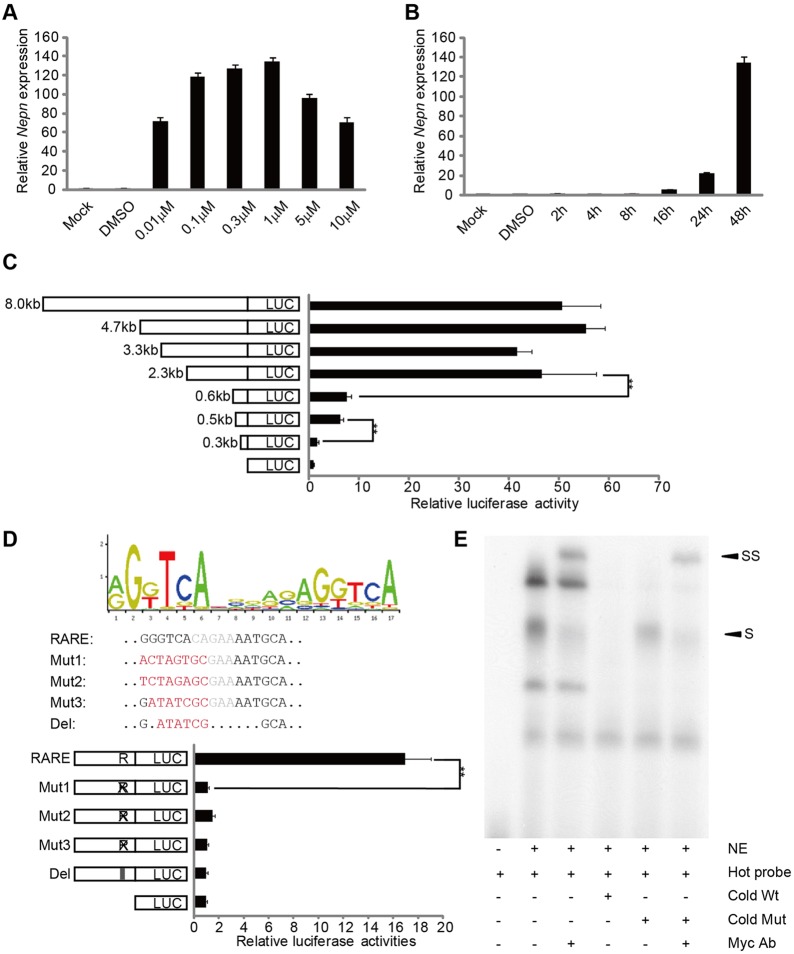Fig. 4.
RA signal directly regulates Nepn expression through an RARE. (A) P19 cells were treated with DMSO or RA for 48 h as indicated. Endogenous Nepn expression was measured by quantitative RT-PCR. (B) P19 cells were treated with DMSO or 0.1 μM RA as indicated. Endogenous Nepn expression was measured by quantitative RT-PCR. (C) Luciferase constructs containing the Nepn TSS and upstream promoter regions were assayed in P19 cells treated with DMSO or RA (0.1 μM). The length of the upstream region for each construct is indicated in the graphic. Relative luciferase activity represents the fold increase observed in the presence of RA relative to DMSO. (D) Consensus RARE (DR5) motif from the JASPAR database is shown with the sequence of the RARE from the Nepn promoter indicated below. Mutations or deletions of the Nepn RARE in the 2.3 kb Nepn promoter luciferase vectors were generated, with mutations as indicated in red, and the vectors were tested in P19 cells in the presence of DMSO or RA (0.1 μM). Relative luciferase activity was determined as described above. (E) EMSA assay of nuclear protein binding to the proposed RARE from the Nepn promoter. Myc-tagged RARα was ectopically expressed in P19 cells treated with RA (0.1 μM) and nuclear extracts were incubated with 32P-labelled RARE from the Nepn promoter. Competition with a 100-fold excess of unlabeled wild-type or mutated RARE is indicated. Anti-Myc antibodies were included in the binding assay as indicated. S indicates the RARα-DNA complex; SS indicates the super shifted complex in the presence of anti-Myc antibody. **P<0.01. Mut, mutated; NE, nuclear extracts; Wt, wild type.

